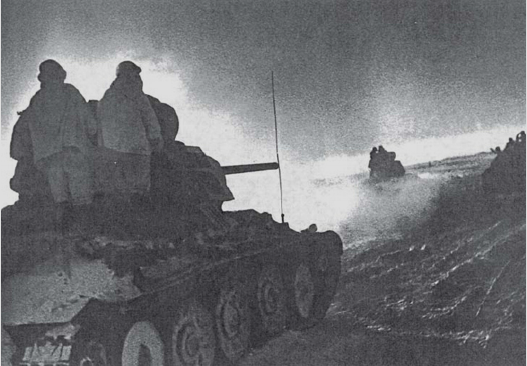How (not) to conduct your raid
Here are a few basic principles from the U.S. Marine Corps publication Raid Operations, which is available for download by raiding hobbyists here. Remember: if raiding manuals are outlawed, only outlaws will have raids.
For each principle we supply a counterexample from the disastrous August 1942 British-Canadian raid on the French port of Dieppe, which had losses comparable to Badanov's raid on Tatskinskaya, but with no strategic benefit whatsoever.
The goals of the Dieppe operation were to win a propaganda victory, embarrass the Germans, and gain some experience. Yes on the experience part. As for the rest, not so much.
PRINCIPLE #1: GET THE INFO. "Detailed planning for a raid requires precise intelligence. The availability or lack of intelligence affects all aspects of the raid operation."
Intelligence on the area was sparse: there were dug-in German gun positions on the cliffs, but these had not been detected or spotted by air reconnaissance photographers. The planners had assessed the beach gradient and its suitability for tanks only by scanning holiday snapshots, which led to an underestimation of the German strength and of the terrain. The [original plan said] "intelligence reports indicate that Dieppe is not heavily defended and that the beaches in the vicinity are suitable for landing infantry and armoured fighting vehicles..."- Wikipedia
 |
| ALWAYS check if there are Germans dug-in on the cliffs |
[T]he Calgary Tanks that did arrive onshore were restricted in their movement, many becoming bogged down by the shingle beach (consisting of large pebbles, known as chert). - The Canadian Encyclopedia
“Having served as a Commando soldier, my main impression after studying the landing beaches… was one of amazement that anyone with the slightest knowledge of amphibious warfare could contemplate such a place.”- Robin Neillands
PRINCIPLE #2: KEEP IT SECRET. "Surprise is a force multiplier essential to raid operations, and is achieved by many means. The capability to conduct the unexpected raid creates for the enemy a host of contingencies for which he must prepare."
[P]art of the landing force encountered a small German convoy, that alerted the German defenses. As the ships approached the Dieppe beach at 5:20 a.m., it was clear that they had lost the element of surprise.- "Disaster at Dieppe", the CBC
The belief that the Germans had received accurate and detailed warning of the attacks has been strengthened by subsequent accounts of both German and Allied POWs. Major C. E. Page, while interrogating a German soldier, found out that four machine-gun battalions were brought in "specifically" in anticipation of a raid. There are numerous accounts of interrogated German prisoners, German captors, and French citizens who all conveyed to Canadians that the Germans had been preparing for the anticipated Allied landings for weeks. - Wikipedia
PRINCIPLE #3: BLAST 'EM. "[F]ire support, particularly on-call fire support, should be considered for every phase. In the event of premature detection, fire support may be the most rapid and effective method of reinforcing the raid force."
The planned air bombardment on Dieppe was reduced, for fear of French casualties, and because of the continuing priority of the strategic bombing offensive on Germany. Eight destroyers were allocated to bombard the shore from seaward, as it was judged that battleships could not be used, being too vulnerable when they were close to the coast...- Julian Thompson, BBC
The Essex Scottish Regiment and the Royal Hamilton Light Infantry landed roughly on time, but they had lost the element of surprise and the limited fire support had failed to suppress or destroy German fire positions. As a result they were met with crushing fire; very few ever got off the beach. - Major C.J. Frederickson
 |
| More of this needed: Warspite at Normandy |
PRINCIPLE #4: HAVE AN EXIT STRATEGY. "Withdrawal must be swift and orderly...The means for evacuation must be available for immediate loading when the raid force arrives at the beach or landing zone (LZ). This is critical as the enemy may be actively pursuing the raid force. Cover is required to prevent enemy interference."
Throughout the extraction, the landing craft were heavily engaged by fire coming from the East and West Headlands (the area that was supposed to be captured by the R Regt C and S Sask R respectively). Only through aggressive RAF support and the use of smoke screens could any landing craft make it ashore and back out to sea. Even with this support, many landing craft were destroyed in the shallow water or sunk as they tried to move away from the beach. - Lieutenant-Colonel James Goodman, USMC
Here are two additional rules not mentioned in the Marine manual from my extensive experience planning raids as a soldier of fortune:
DO NOT ASSUME THE ENEMY WILL STAY CONFUSED. As with mountain climbing, tiger wrestling, and drug dealing, it is easier to get in than it is to get out. As the plan proceeds your own capacities diminish as the enemy begins to regain his senses. You want to be going out the door when that happens. Therefore, never adopt a plan which ends with "and we will escape in the confusion." Work out your exit strategy and a good Plan B beforehand, not late in the afternoon, on a beach swept by machine gun fire.
 |
| They might be assholes, but they're not stupid. |
I also have a second principle, which the raiding force did employ at Dieppe:
EMPLOY UNREASONABLE PEOPLE. Here is a sensible-looking fellow.
At Dieppe, after various superhuman feats, he finished up the day covering the extraction of survivors from a strongpoint he'd established:
 |
Labels: RAIDS































